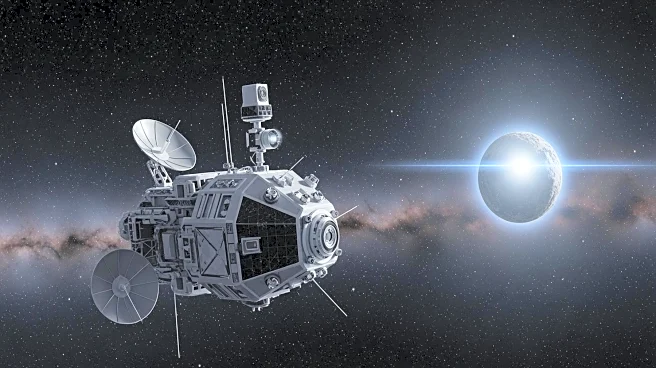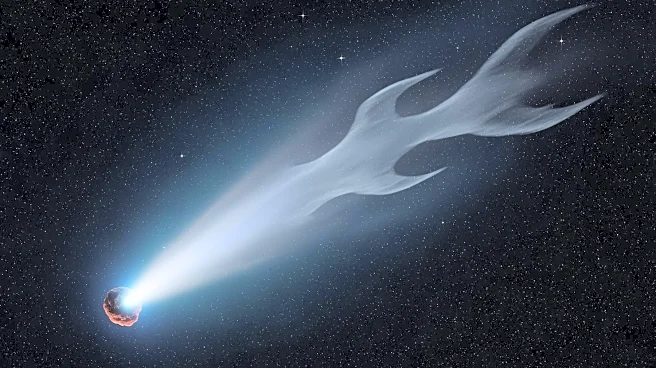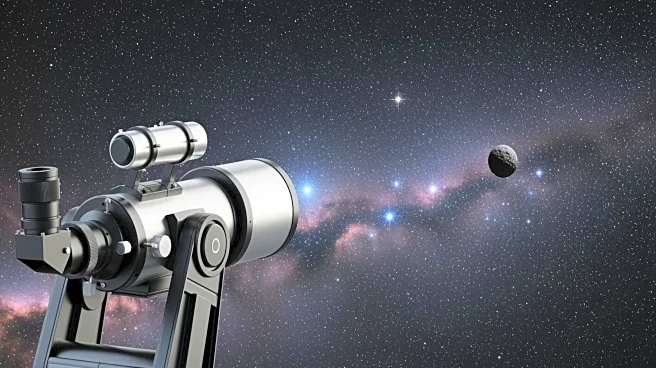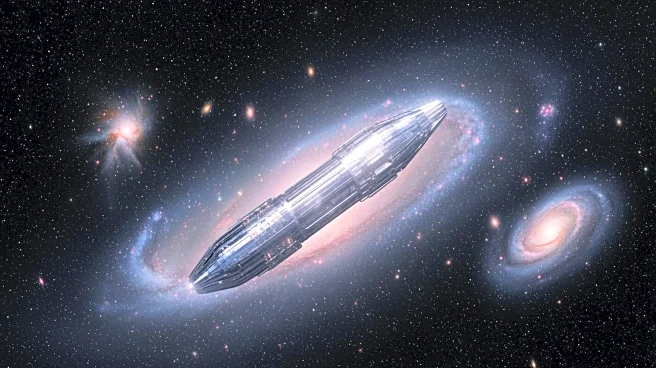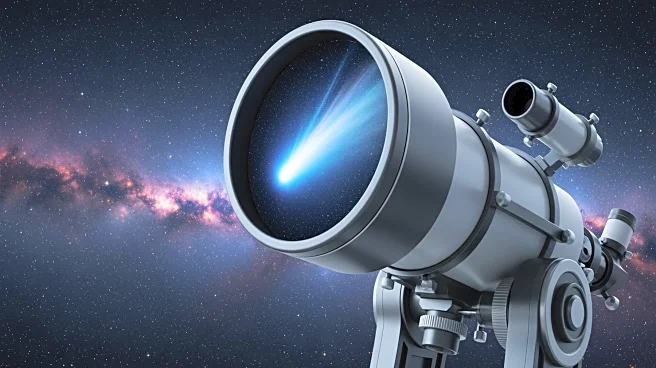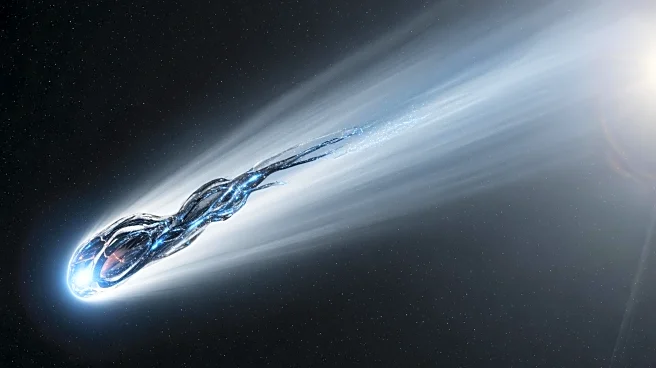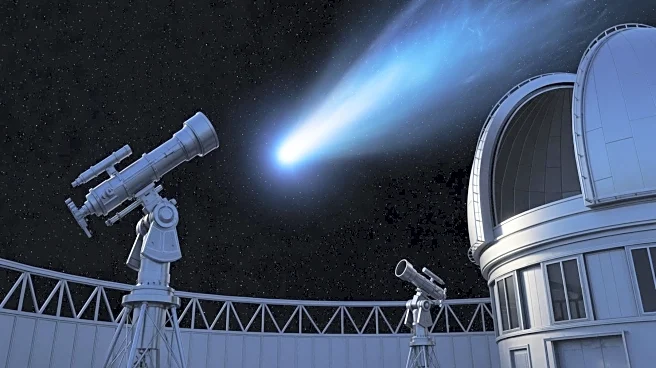What's Happening?
The interstellar object 3I/ATLAS, comparable in size to Manhattan, has developed a tail, which some scientists, including Harvard astrophysicist Avi Loeb, suggest could indicate it is an alien craft. Initially
observed in the solar system in July, 3I/ATLAS displayed an unusual 'anti-tail,' which has now transitioned into a cometary tail. This change was captured by Spain's Nordic Optical Telescope in September. The tail formation is attributed to solar radiation impacting the object as it approaches the sun. The International Asteroid Warning Network has added 3I/ATLAS to its monitoring list, noting its scientific interest despite posing no threat to Earth.
Why It's Important?
The potential identification of 3I/ATLAS as an alien craft could have profound implications for our understanding of extraterrestrial life and technology. If the tail is indeed a result of 'controlled maneuvering,' as suggested by Loeb, it would represent a significant discovery in astrophysics and space exploration. This event has captured the attention of the scientific community, offering a unique opportunity to study an interstellar object with unusual characteristics. The findings could influence future research priorities and funding in the field of space exploration.
What's Next?
Researchers are eagerly awaiting high-resolution images from NASA's HiRISE camera, which could provide more detailed insights into 3I/ATLAS. These images, taken when the object was near Mars, are delayed due to a government shutdown. The object will reach its closest point to the sun on October 29, offering further observation opportunities. Continued monitoring by international space agencies will likely yield additional data, potentially confirming or refuting the hypothesis of alien origin.


